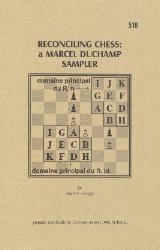ART GALLERY - Lawrence Alma Tadema

Egyptian Chess Players by Sir Lawrence Alma-Tadema (1836-1912), Dutch painter, recognized as one of the masters of Victorian painting.
Labels: ART GALLERY, Lawrence Alma Tadema
Fotografia, Xadrêz, Livros, Angola e outros lugares.

Labels: ART GALLERY, Lawrence Alma Tadema






Labels: Places

Labels: Places




Labels: xadrez

Labels: Edward Hopper

 Camilo Castelo Branco (1825-1890) nasce em Lisboa no dia 16 de Março, filho ilegítimo de Manuel Joaquim Botelho e Jacinta Maria. Frequentou a sociedade portuense, dedicando-se ao jornalismo, e teve uma vida romanticamente agitada, desde vários casos amorosos e prisão. Sentindo-se cego, suicida-se com um tiro na cabeça na casa de São Miguel de Seide. Notabilizou-se com várias novelas, uma delas Amor de Perdição. É um dos maiores escritores portugueses do século XIX. Algumas obras: Os Pundonores Desagravados (poema satírico, 1845), O Juízo Final e O Sonho do Inferno (poema satírico, 1845), Agostinho de Ceuta (teatro, 1847), A Murraça (sátira, 1848), Maria, não me mates, que sou tua mãe (novela, 1848), O Marquês de Torres Novas (teatro, 1849), O Caleche (sátira, 1849), O Clero e o sr. Alexandre Herculano (polémica, 1850), Inspirações (poesia lírica, 1851), Anátema (novela, 1851), Mistérios de Lisboa (novela, 1854), Livro Negro de Padre Dinis (novela, 1855), Cenas Contemporâneas (1855), A Filha do Arcediago (novela, 1855), A Neta do Arcediago (novela, 1856), Onde está a felicidade? (novela, 1856), Um Homem de Brios (novela, 1857), Carlota Ângela (novela, 1858), O Que fazem Mulheres (novela, 1858), Cenas da Foz (novela, 1861), O Romance de um Homem Rico (novela, 1861), Amor de Perdição (novela, 1862), Coração, Cabeça e Estômago (novela, 1862), Aventuras de Basílio Fernandes Enxertado (novela, 1863), O Bem e o Mal (novela, 1863), Amor de Salvação (novela, 1864), A Sereia (novela, 1865), A Queda dum Anjo (novela, 1866), O Judeu (novela, 1866), O Olho de Vidro (novela, 1866), A Bruxa de Monte Córdova (novela, 1867), A Doida do Candal (novela, 1867), O Retrato de Ricardina (novela, 1868), Os Brilhantes do Brasileiro (novela, 1869), A Mulher Fatal (novela, 1870), O Regicida (novela, 1874), A Filha do Regicida (novela, 1875), A Caveira do Mártir (novela, 1875), Eusébio Macário (novela, 1879), A Corja (novela, 1880), A Brasileira de Prazins (novela, 1883), etc.
Camilo Castelo Branco (1825-1890) nasce em Lisboa no dia 16 de Março, filho ilegítimo de Manuel Joaquim Botelho e Jacinta Maria. Frequentou a sociedade portuense, dedicando-se ao jornalismo, e teve uma vida romanticamente agitada, desde vários casos amorosos e prisão. Sentindo-se cego, suicida-se com um tiro na cabeça na casa de São Miguel de Seide. Notabilizou-se com várias novelas, uma delas Amor de Perdição. É um dos maiores escritores portugueses do século XIX. Algumas obras: Os Pundonores Desagravados (poema satírico, 1845), O Juízo Final e O Sonho do Inferno (poema satírico, 1845), Agostinho de Ceuta (teatro, 1847), A Murraça (sátira, 1848), Maria, não me mates, que sou tua mãe (novela, 1848), O Marquês de Torres Novas (teatro, 1849), O Caleche (sátira, 1849), O Clero e o sr. Alexandre Herculano (polémica, 1850), Inspirações (poesia lírica, 1851), Anátema (novela, 1851), Mistérios de Lisboa (novela, 1854), Livro Negro de Padre Dinis (novela, 1855), Cenas Contemporâneas (1855), A Filha do Arcediago (novela, 1855), A Neta do Arcediago (novela, 1856), Onde está a felicidade? (novela, 1856), Um Homem de Brios (novela, 1857), Carlota Ângela (novela, 1858), O Que fazem Mulheres (novela, 1858), Cenas da Foz (novela, 1861), O Romance de um Homem Rico (novela, 1861), Amor de Perdição (novela, 1862), Coração, Cabeça e Estômago (novela, 1862), Aventuras de Basílio Fernandes Enxertado (novela, 1863), O Bem e o Mal (novela, 1863), Amor de Salvação (novela, 1864), A Sereia (novela, 1865), A Queda dum Anjo (novela, 1866), O Judeu (novela, 1866), O Olho de Vidro (novela, 1866), A Bruxa de Monte Córdova (novela, 1867), A Doida do Candal (novela, 1867), O Retrato de Ricardina (novela, 1868), Os Brilhantes do Brasileiro (novela, 1869), A Mulher Fatal (novela, 1870), O Regicida (novela, 1874), A Filha do Regicida (novela, 1875), A Caveira do Mártir (novela, 1875), Eusébio Macário (novela, 1879), A Corja (novela, 1880), A Brasileira de Prazins (novela, 1883), etc.
 Pedro Martins (1992) - José Santos (1754) 10/03/06 - [E01] Catalan Bogo-Indian (3 g3 Bb4+).
Pedro Martins (1992) - José Santos (1754) 10/03/06 - [E01] Catalan Bogo-Indian (3 g3 Bb4+).Labels: xadrez

Labels: xadrez

Labels: Edward Hopper
Labels: xadrez


Labels: Old New York

Labels: ART GALLERY, Marcel Duchamp
Labels: xadrez